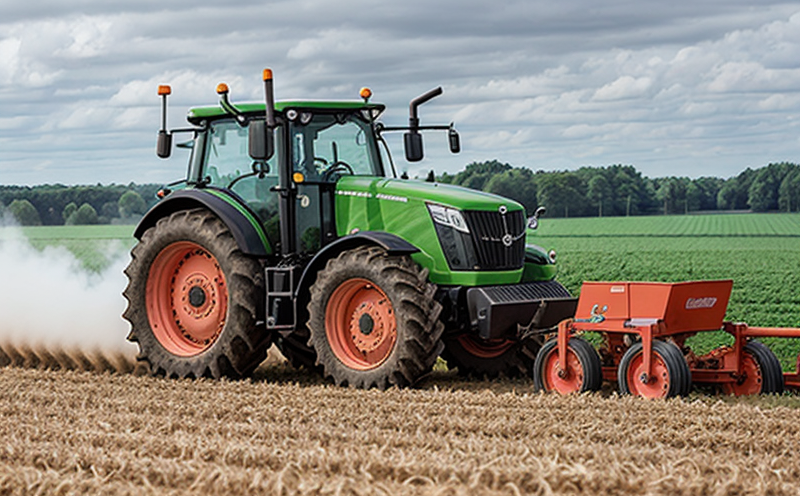Combine Harvester Grain Loss Testing
In the agricultural sector, combine harvesters play a crucial role in efficiently processing grain from the field to storage. Ensuring that these machines operate with minimal grain loss is essential for maximizing yield and profitability. This service focuses on testing the grain loss performance of combine harvesters, ensuring they meet stringent industry standards.
Grain loss during harvesting can occur due to various factors such as mechanical wear, improper settings, or design inefficiencies. By conducting thorough testing, we help manufacturers identify areas for improvement and ensure their equipment meets both customer expectations and regulatory requirements. This service aligns with international standards like ISO 18072:2015 for grain loss measurement.
The testing process involves subjecting the combine harvester to controlled field conditions that simulate real-world harvesting scenarios. Specimens are typically harvested grains of various types, including wheat, corn, and barley. The machine is operated under precise settings to ensure consistent results across tests. Instrumentation used includes high-precision scales and imaging systems to accurately measure grain loss.
Following the test, detailed reports are generated outlining performance metrics such as total grain collected, grain lost during the cutting process, and grain lost during the threshing stage. These metrics provide valuable insights into how effectively the machine is performing its intended function.
The results of these tests are critical for quality managers, compliance officers, R&D engineers, and procurement teams within agricultural machinery manufacturers. They help in refining design parameters, improving manufacturing processes, and ensuring that end products meet or exceed industry standards.
By partnering with us for this service, businesses can gain a competitive edge by delivering superior products to the market. Our expertise ensures that every test is conducted under controlled conditions, providing reliable data that supports decision-making processes throughout product development cycles.
Why Choose This Test
Selecting combine harvester grain loss testing for your agricultural machinery ensures several key benefits:
- Enhanced Efficiency: Identifies inefficiencies in the harvesting process that lead to unnecessary grain losses.
- Improved Product Quality: Guarantees that the end product meets both internal and external quality standards.
- Regulatory Compliance: Ensures adherence to relevant international standards like ISO 18072:2015.
- Customer Satisfaction: Delivers reliable performance, which translates into higher customer satisfaction levels.
The testing process not only helps manufacturers identify potential issues but also provides a platform to innovate and improve future models. By investing in this service, companies can stay ahead of the competition by offering more efficient, reliable, and cost-effective solutions to their customers.
Quality and Reliability Assurance
The importance of quality assurance cannot be overstated when it comes to agricultural machinery. Grain loss testing is a vital component in ensuring that the equipment operates reliably and efficiently under various field conditions. This section delves into the rigorous processes involved in maintaining high standards throughout the testing cycle.
Before any test begins, thorough preparation ensures that all necessary equipment is calibrated correctly and ready for use. Specimens are carefully selected to represent typical grain types found in agricultural settings worldwide. Once the machine is set up, it undergoes a series of checks to confirm optimal operation before actual testing commences.
During the test itself, multiple parameters are continuously monitored using advanced instrumentation. This includes tracking grain flow rates, analyzing cut quality, and measuring losses at different stages of processing. After each run, data is meticulously recorded and analyzed to determine overall performance levels. Any discrepancies or anomalies are noted for further investigation.
Post-test evaluation involves reviewing all collected data against set criteria established by recognized standards bodies. This helps in identifying any areas where improvements can be made. The final report summarizes findings alongside recommendations for enhancing future designs or operational procedures.
Use Cases and Application Examples
- New Product Introduction: Testing new models before launch ensures they meet all necessary specifications.
- Preventive Maintenance: Routine testing helps identify issues early, preventing costly repairs later on.
- Competitive Advantage: Superior performance can set a product apart in competitive markets.
- Certification Compliance: Ensures that all products comply with relevant international standards.





